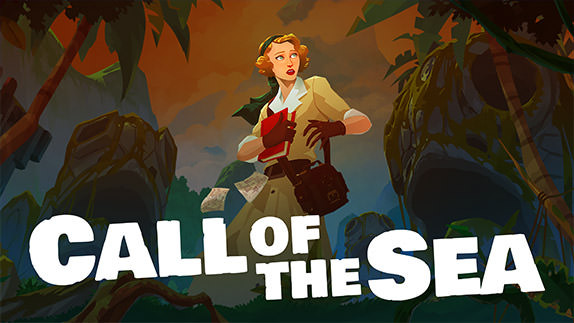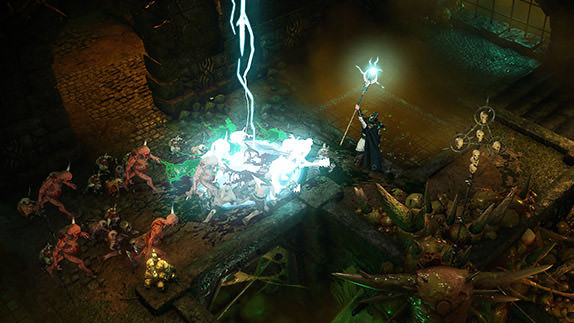Teenage Mutant Ninja Turtles: Mutants in Manhattan Review

 By Kevin Mitchell | Posted: May 31, 2016
By Kevin Mitchell | Posted: May 31, 2016
Although Mutants in Manhattan received both a digital and retail release, the first video game for the four iconic heroes in a half shell this generation is an utter disappointment. Continuing PlatinumGames's lineup of licensed offerings, Mutants in Manhattan utilizes the same pleasing cel-shaded visuals found in last year's Transformers: Devastation and continues the same beat-em-up combo system that their recent games have employed. However, the game's lack of depth, repetitive combat, and ho-hum mission design is tougher to stomach than turtle soup. The only saving grace is the game's boss battles, which are relatively enjoyable encounters containing playful banter between the four turtles and the recognizable bosses. If only you didn't have to play through the uninspired rest of the game to experience them.
Mutants in Manhattan follows the tried-and-true storyline that fans of the series have grown accustomed to since the original comic book series in the '80s. Shredder and Krang are attempting a nefarious plan to take over the world and have dispatched their mutants across the city. From classics like Bebop and Rocksteady to the more recent mutated shark Armaggon, you'll encounter almost all of your TMNT favorites.
The opening tutorial sequence introduces the majority of the game's mechanics, while you'll learn about the mission structure in the first of nine stages. The game uses a simple two-button light and heavy attack combo system, along with a multi-stage parry system, a one-hit Takedown stealth mechanic, and unique Ninjutsu attacks. The combo system never goes anywhere; it doesn't evolve. Ever. You won't unlock new combos, and you never feel like you're doing more than button-mashing through every fight, regardless of difficulty. Occasionally, you'll tap to dodge the Foot Clan's attacks, either rolling out of the way or appearing behind them ready to pounce. Holding the button allows you to block, but you'll quickly drain your meter. Blocking attacks will consume chunks of it as well, and if it depletes completely, your turtle will be temporarily stunned for a few seconds.
If you happen to come across unsuspecting foes that haven't seen you yet, you can perform a Takedown for a one-hit kill. Each turtle comes with four slots for special Ninjutsu attacks that can be changed from within the menus. These include performing double team attacks, temporarily slowing down time, or unleashing a slew of quick attacks. Using XP earned during battles, you can purchase new abilities or upgrade existing ones to reduce their cooldown timer. In practice, I never felt the need to upgrade or replace any of the starting abilities, as I had no problem spamming basic attacks through this very short game. They also do so little damage that I never felt compelled to focus on using them.
Items and boosts can be purchased via the Turtles' Lair by locating any open manhole cover you come across. Besides buying pizza to recover health, you can choose from various stat boosters that appear to have minimal effect. Ranged turrets or bombs are hit-or-miss and largely forgettable.
As you might expect, the action becomes hectic with all four turtles on-screen spamming attacks simultaneously. From a gameplay perspective, it makes no sense to restrict the game to only a single turtle, but at the same time, it would have made things more organized. Regardless if you are playing alone or online (no local co-op), Mutants in Manhattan is always a four-player game. Playing online is preferable, but only because playing alone hamstrings your team with disappointing AI. You can switch turtles at any time when playing alone, but I was able to stick with Leonardo through the entire four-hour campaign.
Stages are broken out by bosses, so you'll always know who you will encounter at the end. It isn't simply a matter of reaching the boss, however, as you must complete meaningless tasks given to you by April O'Neill. Using the unique talents of the four turtles, you'll be doing the city a service by protecting ATMs, Pizza Trucks, and retrieving stolen piles of gold bars. These highly repetitive, tedious tasks are nothing more than unenjoyable time sinks until you can face the area's boss. Most of the time you'll be hopping across rooftops or running down sewers just waiting for the next mission. Speaking of the environments, you'll be retracing your steps through the same locations multiple times. Secret bosses can show up when replaying a level, but they only have a portion of their normal health, making it more of a cameo than anything else.
Simply Put
Teenage Mutant Ninja Turtles: Mutants in Manhattan is an utter disappointment, failing to return the series to its arcade roots. Perhaps it would have fared better as a side-scroller, dropping the regrettable meaningless tasks and instead featuring the four turtles battling countless Foot Clan ninjas until reaching the boss. The combat doesn't feel smooth as the game is limited to 30FPS instead of the typical 60FPS that PlatinumGames deserves. There are collectible comic book covers to find, but the game's over before you know it and is almost fully priced as well.
Note: Teenage Mutant Ninja Turtles: Mutants in Manhattan was reviewed on PlayStation 4. A digital copy of the game was provided by the publisher/developer.




